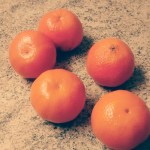 The glycaemic effects of food are of interest to nutritional scientists because excessive postprandial rises in blood sugar are thought to contribute to the disease process. The fibre to carbohydrate ratio is an important determinant of the glycaemic effect of foods, and higher fibre to carbohydrate foods tend to prevent liver overload through an increase in the transit time through the gut and reduced absorption rate. Despite containing high amounts of sugars, fruit is not detrimental to health because of the high content of fibre. However, refining the fruit to create juice, however, lowers the fibre to carbohydrate ratio and can increase liver overload and de novo lipogenesis, which may in turn lead to the development of insulin resistance. Some fruits also contain higher amounts of starch and this may further reduce the postprandial glycaemic effects through decreased availability of glucose for the blood.
The glycaemic effects of food are of interest to nutritional scientists because excessive postprandial rises in blood sugar are thought to contribute to the disease process. The fibre to carbohydrate ratio is an important determinant of the glycaemic effect of foods, and higher fibre to carbohydrate foods tend to prevent liver overload through an increase in the transit time through the gut and reduced absorption rate. Despite containing high amounts of sugars, fruit is not detrimental to health because of the high content of fibre. However, refining the fruit to create juice, however, lowers the fibre to carbohydrate ratio and can increase liver overload and de novo lipogenesis, which may in turn lead to the development of insulin resistance. Some fruits also contain higher amounts of starch and this may further reduce the postprandial glycaemic effects through decreased availability of glucose for the blood.
For example, Research published in the American Journal of Nutrition1 investigated the effect of feeding a variety of fruit and a mixed meal in otherwise healthy type 1 diabetics. The meal comprised of green beans, rice, turkey and margarine and contained 50 % of calories as carbohydrate, 20 % as protein and 30 % as fat. To this was supplemented either grapes, honeydew melon, oranges, apples, strawberries or bananas. The blood glucose rise following the strawberries, melon, oranges and grapes was significantly higher when compared to that of bananas or apples. The authors concluded that the small content of starch present in apples and bananas may have been the reason for the beneficial effects on postprandial glycaemia. In fact when added to the meal the apple and banana produced virtually no extra glycaemic response compared to the mixed meal alone.
Unripe fruit contains starch, and as the fruit ripens this is enzymatically converted to less complex sugars. This is the reason for the sweet taste of ripe fruit and the less sweet taste of unripe fruit. Therefore the amount of starch in a banana is dependent on the ripeness of the fruit at the time of eating. Generally, green bananas contain higher concentrations of starch. Evidence indicates that in its starch form, the carbohydrate in bananas is resistant to digestion by human gut enzymes, as demonstrated by experiments using human illeostomy patients. Apples too contain high concentrations of starch in their unripe form, and this is slowly converted to sugars. Because bananas and apples are often eaten prior to full ripeness, they contain higher concentrations of starch than other fruits that are perhaps eaten in their ripe state such as grapes, strawberries and melon. This affects the glycaemic responses they produce.
RdB
